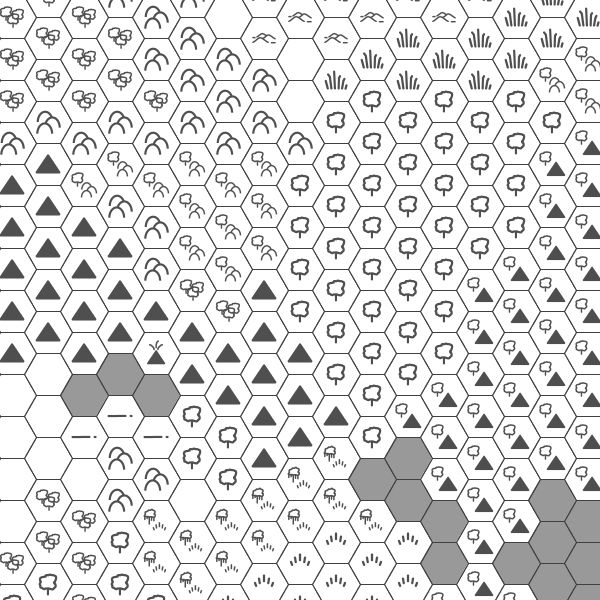This is going to be a links post rather than a detailed explanation. The reason being is that there are a lot of good explanations already out there. There are a lot of programs on the internet you can create rpg maps with, I'm just going to talk the ones I've used.
Lets start with the easiest
Pyromancers
http://pyromancers.com/dungeon-painter-online/
This is a flashed based website embedded tool that allows you to draw grid based dungeon maps. Its wiziwig, just click on the style of tile you want, select rectange, eclipse, custom polygon etc and draw some shapes. Its a very quick and easy way of producing room/dungeon layouts. The end result isn't very graphically distinct and creating unconventional shapes can be a bit of a pain but it works. You can export your creations as image files.
I used Pyromancers quite a bit at first, as it was a very easy way to create excessively large dungeon maps.
http://www.hexographer.com/
Hexographer comes with a free ware version, download this and try it out. Based on OSR blogs this seems to be what most people use.
Lets start with the easiest
Pyromancers
http://pyromancers.com/dungeon-painter-online/
This is a flashed based website embedded tool that allows you to draw grid based dungeon maps. Its wiziwig, just click on the style of tile you want, select rectange, eclipse, custom polygon etc and draw some shapes. Its a very quick and easy way of producing room/dungeon layouts. The end result isn't very graphically distinct and creating unconventional shapes can be a bit of a pain but it works. You can export your creations as image files.
I used Pyromancers quite a bit at first, as it was a very easy way to create excessively large dungeon maps.
http://www.hexographer.com/
Hexographer comes with a free ware version, download this and try it out. Based on OSR blogs this seems to be what most people use.
Using the freeware version you can create simple old school hex maps very quickly. Visually its comparable to some D&D stuff from the 80s.
There are a few other freeware hex mapping bits of software. I tried using a java script one (forget its name and link) but Hexographer seems to be the most accessible/best. I used it for my Mutant Future campaign to create the game world map. The colours of Hexographer didn't really suit the setting so I opened the output image in Gimp and altered them a bit. Hexographer does the hexes well, but lines for rivers and boundaries always look a bit crap.
This brings us to GIMP, that is GNU Image Manipulation Program
http://www.gimp.org/
Currently at version 2.8 this is one of the best pieces of freeware on the net. It is essentially a freeware version of Photoshop. Unlike most bits of freeware, once you learn the ropes its pretty much as good as its commercial competitor (it's definitely better than corelpaintshop).
Gimp can be used to create any sort of map, dungeons, cities, worlds etc.
All of my maps are built on the basis of these three Cartographers guild tutorials
Dungeon maps; http://www.cartographersguild.com/showthread.php?t=2461
world mapping; http://www.cartographersguild.com/showthread.php?t=1142
hand drawn style maps; http://www.cartographersguild.com/showthread.php?t=10655
Towns and cities; http://www.cartographersguild.com/showthread.php?t=18390
I recommend starting with Toristan's dungeon map tutorial if you are new to GIMP. Its an easy in and explains stuff in some detail. Then look at the second link, Roba's mapping. It will show you some more of GIMPs potential.
In general cartographers guild is great. There are a lot of tutorials and the forums are full of friendly folk who will answer questions. Critically, you don't need to be able to draw or have any real artistic tallent to produce any of this stuff. It's all process and effect.


Comments
Post a Comment